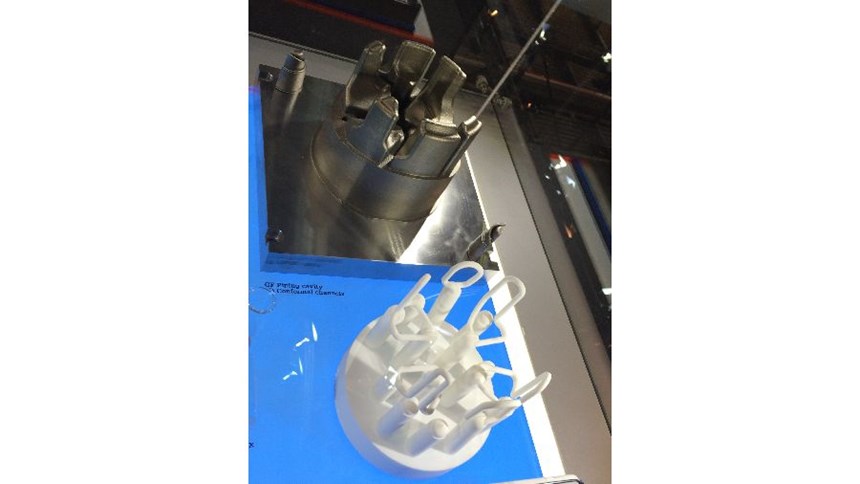Think Beyond the Machine Tool
A machine jointly developed by GF Machining Solutions and EOS is designed to support mold and die manufacturers.
Just when you think you’re caught up with all the methods for conformal cooling and machines for additive manufacturing, you come across a slightly different approach to both. That’s exactly what happened to me during EMO last month when GF Machining Solutions and EOS jointly debuted a new tooling manufacturing solution designed specifically to help optimize the full production of metal mold inserts with conformal cooling. What’s different, you ask? This solution goes beyond the machine.
This collaborative effort aims to offer both machine technology and expertise to support the mold and die communities with their AM endeavors by giving them a system not a single machine. GF Machining and EOS were motivated to develop this solution because they understand that to truly benefit from AM, users need to know everything from design to postprocessing.
The AgieCharmilles AM S 290 Tooling solution integrates the AM machine, incorporating powder bed-based laser sintering technology from the EOS M 290 system, into an entire production process. This includes the necessary software, automation, required secondary processing equipment (for example, EDM, milling and laser texturing) and measuring devices. The means the moldmaker is working with one source. And all of this is focused only on creating high-quality metal mold inserts with conformal cooling.
According to Gisbert Ledvon, director of business development for GF Machining Solutions, a leading advantage of this joint effort is the quality of the final mold insert. EOS technology separates itself from other AM providers by guaranteeing material quality. EOS provides certified metal powder not only for mold steel similar to H13, but now also stainless steel metal powder. In addition, EOS offers a parameter set that will ensure the material density is 99.95 percent solid. It is heat-treatable similar to other mold steels.
The sintering technology offers freedom of design, which helps shorten cycle times, increase productivity, improve plastic product quality and lower energy consumption. For instance, check out the metal mold insert in the second photo for piping that features thermal exchange close to the surface to ensure and control temperature homogeneity for shorter throughput time and increase part quality.
Related Content
-
Additive Manufacturing Is Subtractive, Too: How CNC Machining Integrates With AM (Includes Video)
For Keselowski Advanced Manufacturing, succeeding with laser powder bed fusion as a production process means developing a machine shop that is responsive to, and moves at the pacing of, metal 3D printing.
-
8 Cool Parts From Formnext 2023: The Cool Parts Show #65
New additive manufacturing technologies on display at Formnext were in many cases producing notable end-use components. Here are some of the coolest parts we found at this year’s show.
-
VulcanForms Is Forging a New Model for Large-Scale Production (and It's More Than 3D Printing)
The MIT spinout leverages proprietary high-power laser powder bed fusion alongside machining in the context of digitized, cost-effective and “maniacally focused” production.

















